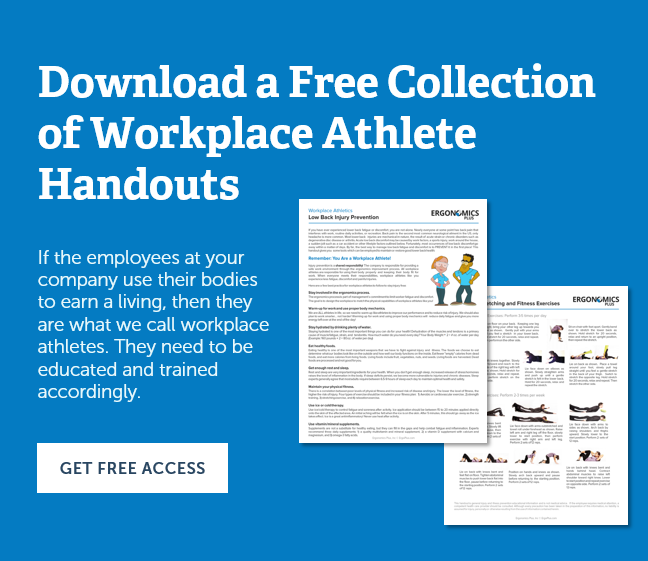Editor’s Note: Injury prevention and wellness handouts are an effective (and inexpensive) way to educate and motivate employees to use good work practices and take care of their bodies.
Scroll to the bottom of this post for the free Wellness Handout PDF file.
Hand Washing and Hygiene
A wise man should consider that health is the greatest of human blessings.
~ Hippocrates
Hand Washing and Hygiene 101
As kids, we all learned the importance of washing our hands. It was a practical lesson on personal health and hygiene that we need to keep in mind at all times, at any age.
According to the Center for Disease Control (CDC), “Keeping hands clean through improved hand hygiene is one of the most important steps we can take to avoid getting sick and spreading germs to others. Many diseases and conditions are spread by not washing hands with soap and clean, running water.”
How to Wash Your Hands
It’s generally best to wash your hands with soap and water.
If soap and water are not available, use an alcohol-based hand sanitizer that contains at least 60% alcohol. Alcohol-based hand sanitizers can quickly reduce the number of germs on hands in some situations, but sanitizers do not eliminate all types of germs.
The simplest way to stop spreading germs around is to wash your hands!
When to wash your hands
Always wash your hands before:
- •Preparing food or eating
- •Treating wounds, giving medicine, or caring for a sick or injured person
- •Inserting or removing contact lenses
Always wash your hands after:
- •Preparing food, especially raw meat or poultry
- •Using the toilet or changing a diaper
- •Touching an animal or animal toys, leashes, or waste
- •Blowing your nose, coughing or sneezing into your hands
- •Treating wounds or caring for a sick or injured person
- •Handling garbage, household or garden chemicals, or anything that could be contaminated
Think prevention! Prevention is always better than treatment! Hand washing and hygiene is a proactive strategy to stay well.
